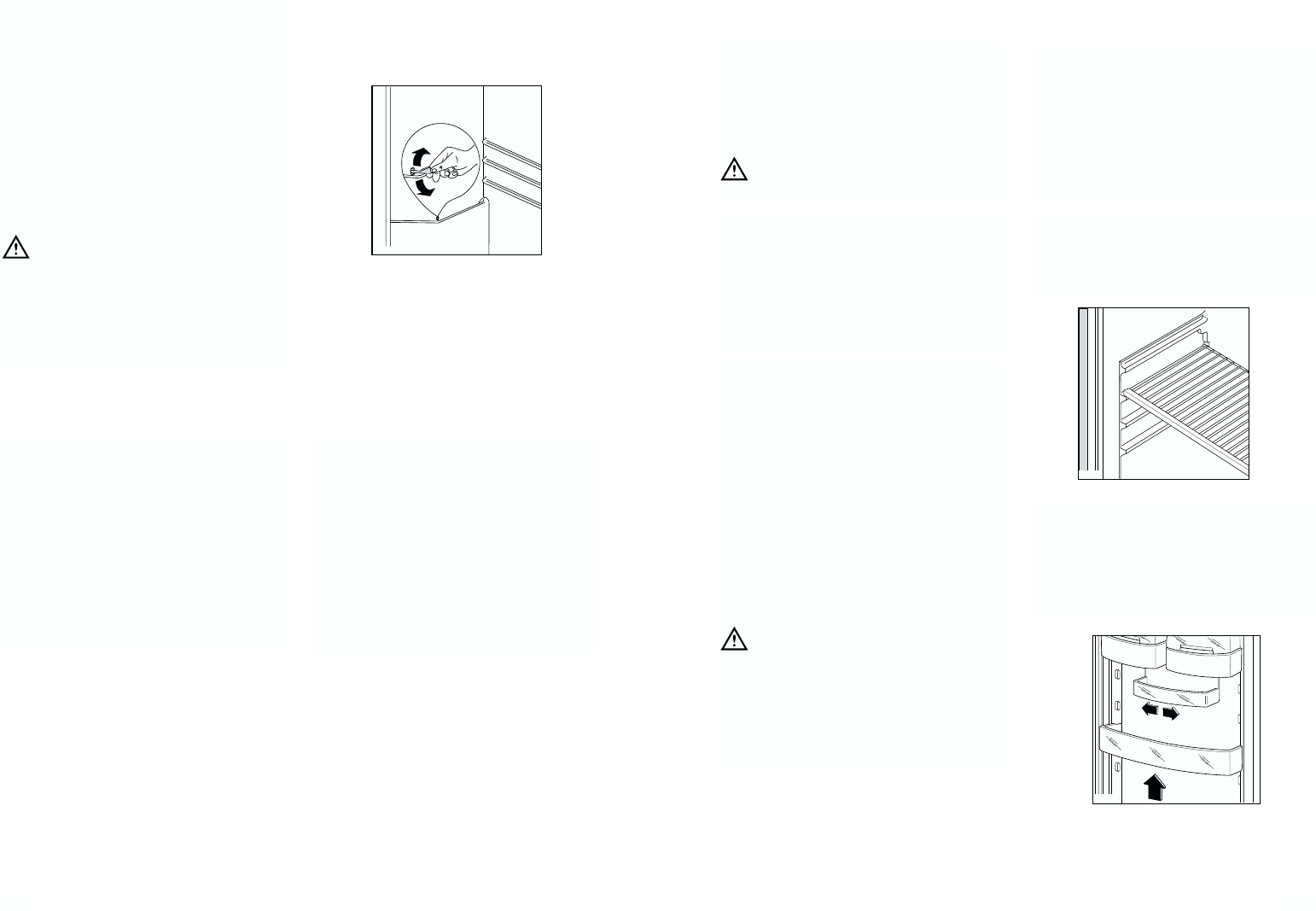User manual

6
COMO ACTUAR SI EL APARATO NO FUNCIONA
Si el aparato presentase anomalías será oportuno
controlar:
• Que esté bien enchufado y que el interruptor de
la instalación eléctrica esté conectado.
• Que no haya un corte de energía eléctrica.
• Que el mando del termostato se encuentre en su
posición correcta.
• Si el compresor funciona sin interrupción,
verificar que el termostato no se encuentre en
una posición
• Además si el aparato hace demasiado ruido
verificar que los costados no estén en contacto
con muebles que pueden causar ruidos o
vibraciones y que la unidad refrigerante no vibre.
• Si se ven restos de agua en el fondo del
refrigerador comprobar que el orificio de
desagüe de la escarcha derretida no esté
obturado (ver cápitulo Desescarche).
Si después de los controles sugeridos, el defecto
persiste, serà oportuno llamar al Centro de
Asistencia Técnica más cercano.
Es importante en el momento de llamar
proporcionar la referencia del modelo y el
número de matrícula del aparato indicados en el
certificado de garantía o en la tarjeta matrícula.
D037
Desescarche
La escarcha del evaporador del compartimento refri-
gerante se elimina automáticamente a cada interrup-
cion del motocompresor. El agua de la escarcha der-
retida, mediante un canal adecuado, se recoge en un
pequeño depósito colocado en la parte posterior
sobre el motocompresor del aparato, de donde
evapora.
Se recomienda limpiar periódicamente el agujero
de desagüe del agua de desescarche, situado en
la parte central del canal en el compartimiento
refrigerante, utilizando el «limpiador» adecuado
que se encuentra en el agujero, para evitar que el
agua de desescarche caiga sobre los alimentos.
Atención
Se recomienda no utilizar utensilios metálicos
para quitar la escarcha a fin de evitar graves
daños al aparato.
No usar dispositivo mecánico alguno u otro
medio artificial para acelerar el processo de
desescarche excepto los recomendados.
11
Cleaning the interior
Before using the appliance for the first time, wash
the interior and all internal accessories with luke-
warm water and some neutral soap so as to remove
the typical smell of a brand-new product, then dry
thoroughly.
Do not use detergents or abrasive
powders, as these will damage the finish.
Operation
Insert the plug into the wall socket.
Open the refrigerator door and turn the thermostat
knob, clockwise, beyond the «O» (STOP) position.
The appliance will start to operate.
To stop operation, simply turn the thermostat knob to
position «O»
Temperature regulation
The temperature is automatically regulated and can
be increased to achieve a higher temperature
(warmer) by rotating the thermostat knob toward
lower settings or reduced (colder) rotating the knob
towards higher settings.
However, the exact setting should be chosen
keeping in mind that the temperature inside the
refrigerator depends on:
• room temperature;
• how often the door is opened;
• the quantity of food stored;
• location of appliance.
A medium setting is generally the most suitable.
Important
If the ambient temperature is high or the
appliance is fully loaded, and the appliance is
set to the lowest temperatures, it may run
continuously causing frost to form on the rear
wall. In this case the dial must be set to a higher
temperature to allow automatic defrosting and
therefore reduced energy consumption.
USE
Fresh food refrigeration
To obtain the best performance:
• do not store warm food or evaporating liquids in
the refrigerator;
• do cover or wrap the food, particularly if it has a
strong flavour.
• Position food so that air can circulate freely round
it.
Movable shelves
The walls of the refrigerator are equipped with a
series of runners so that the shelves can be
positioned as desired.
D040
Positioning the door shelves
To permit storage of food packages of various sizes,
the door shelves can be placed at different heights.
To make these adjustments proceed as follows:
Gradually pull the shelf in the direction of the arrows
until it comes free, then reposition as required.








